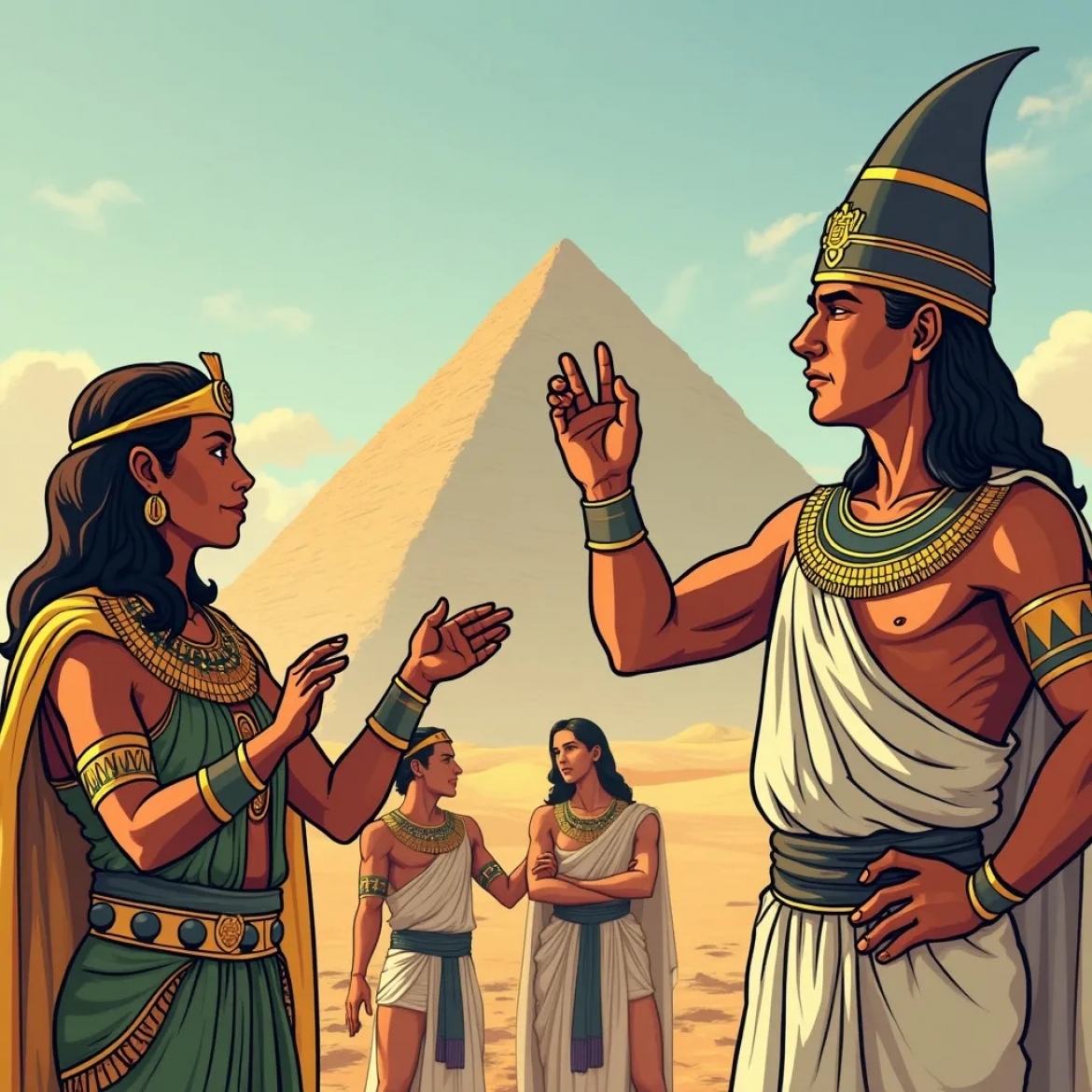Project Context
In the times of Ancient Egypt, the construction of the pyramids, such as those at Giza, was viewed as a project of immense religious, economic, and social importance. The success of the project goals was fundamental not only for the Pharaoh's vision but also for the stability and legacy of the kingdom itself.
Roles and Responsibilities (Organizational Structure):
- Pharaoh (Executive): Acted as the project sponsor, setting the vision and primary objective, which in the Egyptian context was ensuring a safe passage to the afterlife. The Pharaoh formed the Project Board, providing the necessary direction and support.
- Vizier (Senior User): Responsible for representing the benefits that the population and the kingdom would gain from the completion of the pyramids.
- Imhotep (Project Manager): A renowned architect and engineer who was responsible for planning, executing, and monitoring the progress of the work. He coordinated daily activities and managed human and material resources.
- Team Leaders (Team Managers): Managed various teams of specialized workers, coordinating craftsmen, laborers, and suppliers.
Planning and Control:
- Stage Plans: The construction of the pyramid was divided into clear phases: site preparation, block extraction and transportation, and structure assembly. Each phase had specific goals and carefully allocated resources.
- Quality Assurance: Quality was crucial; the precision in the alignment of stones and architectural proportions was essential for the project's success.
Risk Management:
- Risk Identification: Included monitoring the Nile floods and ensuring the continuous availability of resources like limestone and granite.
- Contingency Plans: Strategies for moving blocks during flood periods and alternative means of transportation and labor.
Resource Management:
- Advanced Logistics: Coordinated the seasonal workforce, including farmers employed during times of famine, and managed food and housing for thousands of workers, as well as the supply of tools and materials.
Progress Reporting:
- Work Package Reports: Utilized scribes to record progress, manage issues, and maintain project records.
Project Closure (Closing a Project):
- Handover: Upon completion, the pyramid was presented to the Pharaoh, ensuring compliance with the original "Product Description" and celebrating the fulfillment of the project through rituals and ceremonies.
Through a rigid yet efficient structure of governance and project control, the Egyptians were able to complete some of the most extraordinary architectural structures in human history. When we consider the complexity and duration of these works, we can recognize the application of ancient project management principles that echo modern practices as described by PRINCE2.







